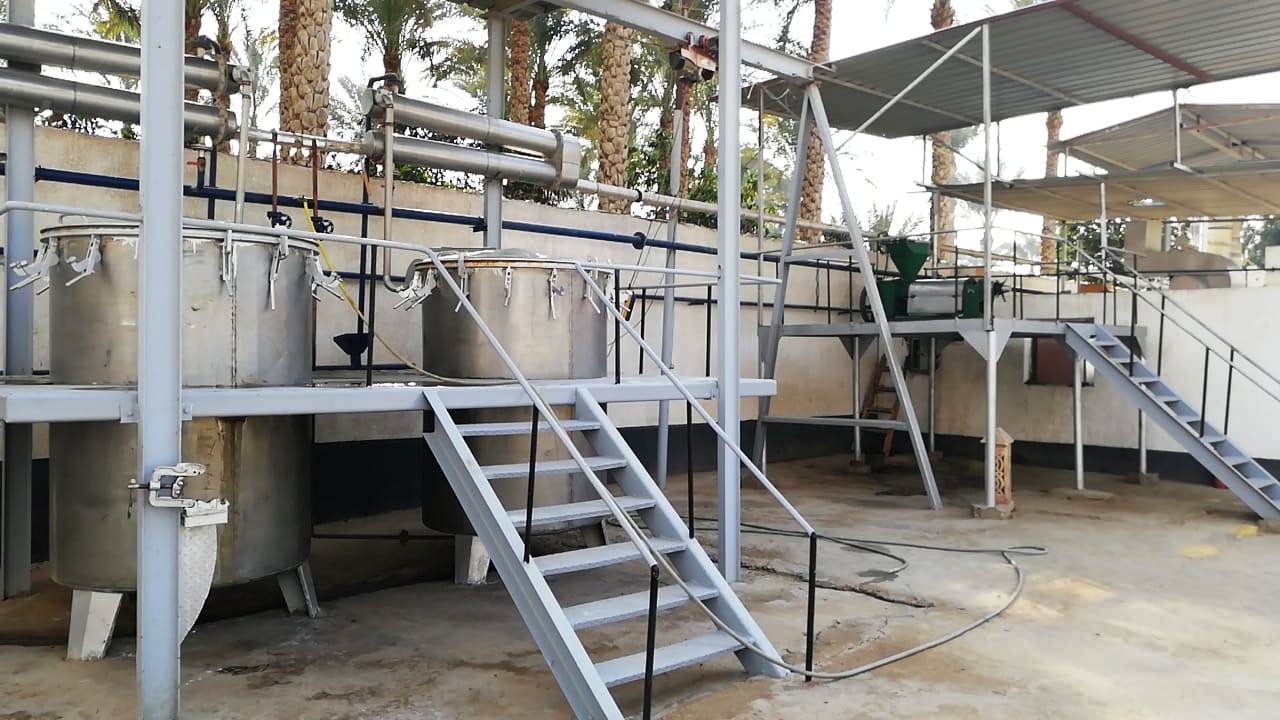Peppermint Mentha Piperita Essential Oil (Egypt & China)
Login to view prices
Common name: Peppermint
Latin name: Mentha x piperita L.,
Family: Lamiaceae
Other names: Engl.: peppermint, black peppermint, chocolate mint. Deu.: Pfefferminze. Suom.: piparminttu. Sven.: pepparmynta. Fran.: menthe poivrée. Bot. syn.: Mentha aquatica L. x spicata L., Mentha dumetorum Schultes.
Peppermint is a sterile hybrid derived from a cross between Mentha aquatica and M. spicata.
Botanical Origin:
Common name: Peppermint
Latin name: Mentha x piperita L.,
Family: Lamiaceae
Other names: Engl.: peppermint, black peppermint, chocolate mint. Deu.: Pfefferminze. Suom.: piparminttu. Sven.: pepparmynta. Fran.: menthe poivrée. Bot. syn.: Mentha aquatica L. x spicata L., Mentha dumetorum Schultes.
Peppermint is a sterile hybrid derived from a cross between Mentha aquatica and M. spicata.
Description:
The so-called English or black mint, M. piperita var. vulgaris L., has square branching stems, that are of dark green to deep purple color and bear opposite, broadly lance-shaped, slightly toothed leaves of deep green color, 1 to 2 in. long.
The plant spreads by a system of branching, underground rootstocks, and grows to a height of 1.5 to 3 ft.
Small purplish blossoms, which flower from late July to early September, are borne in terminal spikes on the main stems and branches.
The so called M. piperita L., resembles the English or black mint, but has green stems and leaves of lighter green color.
Range & Habitat:
Peppermint is naturalized from Europe and is found in damp places. It is largely cultivated, principally in Indiana, Michigan, Oregon, Washington, and California, for the production of peppermint oil. Now it is cultivated everywhere.
Peppermint grows on a wide range of soils, but thrives best in deep, rich, well-drained, but not over drained, irrigated, former swamp lands. An optimum of growth and oil yield is obtained on nonacid soils – pH 6 to pH 7.5, with pH 5.0 to pH 8.0 as the wider limit.
Planting & Cultivation:
The land should be cleaned as thoroughly as possible. The ground is prepared by plowing in fall or spring, and disking and harrowing before planting.
For fertilizing the soil, well-rotted stable manure or commercial fertilizers containing high percentage of potash are recommended. A mixture having a ratio of either one part of phosphate to two parts of potash, or equal parts of phosphate and potash was most effective. 300 lb/acre are sufficient.
After the land has been prepared, furrows 5 to 6 in. deep and 30 to 42 in. apart are laid out. The most widely used method of growing peppermint is by propagation with root stock. For this purpose roots from a previous year’s planting are dug out during March, usually with the help of homemade machines, transformed plows, or potato diggers. Special plots should be prepared from which to take new plantings. This plot should be well fertilized, and cut at least by August 15th. One acre so treated will plant ten acres. After adhering soil has been shaken off, the roots are forked into piles and covered with earth, which keeps them moist until general conditions permit replanting.
Most peppermint growers plant in the spring, but a few have learned to plant successfully during October and November. The planting is done by placing in the furrows selected runners overlapping one another and forming a continuous row. The furrows must be covered and the soil packed.
The roots begin to sprout in late April, the period depending upon weather conditions. Cultivation is continued for about forty-five days when the palnts have approximately three-fourths matured.
Peppermint planted during the previous fall or the spring of the same year is called “row mint”, because the fields consist of clearly marked rows of palnts. As the fields become older the rows overgrow, forming regular meadows. “Meadow mint”, therefore , refers to fields two years old and older. The common practice is to keep a field in mint for three years, when its productivity declines.
Harvesting and Preparing for the Market:
It was observed that the plant first develops menthone, which in later stages seems to be transformed into menthol.
For practical purposes, harvesting should be done when the mint is in bloom in order to obtain the optimum oil yield and menthol content.
It is important to time the cutting properly, as individual plants open at different times and the period of bloom extends over several days. Cutting should be done early in the day. Shining globules of oil may be observed on the underside of the leaves when tilted in sunlight, indicating that the oil is well “up” in the leaves.
“Meadow mint” is cut from the middle of July to the middle of August, “row mint” during the latter part of August and early September. During dome seasons it is possible to make two cuttings. However, the second harvest, known as “clippings”, produces inferior oil. A second cutting is not advisable unless the field is to be discontinued, because it generally ruins the stand and strength of the planting.
Ordinary hay mowers, usually equipped with a short cutter bar, serve for cutting the mint which, on small fields, can also be cut by hand, using scythes.
Drying;
The cut mint is left in the swath to “cure” until about half dry. The time required for this process depends on the weather. Under favorable conditions the hay may e raked the following morning; sometimes the drying takes three or more days. Usually the mint is left in the fields for 48 hr.
Wet mint is very difficult to distill and, in most cases, cannot be completely exhausted. The spread mint is turned over into windrows with side delivery rakes, later bunched into hay cocks like those made for drying clover hay, then loaded with hay loading equipment on trucks or wagons, and finally transported to the distilleries.
In fact it was found that palnts of the labiatae family, when dried in direct sunlight, lost as much as 24% of essential oil; dried in the shade they lost between 2 and 10%. A temperature of 25 ° – 30° C was found most effective in preventing undue loss of oil.
Yield:
Yield of peppermint oil per acre varies from 10 to 75 lb., on the average it is 24 or 25 lb. it averages from 0.3 to 0.4 % but may be as high as 1 %.
Method of Extraction:
Steam distillation
Distillation of a batch requires in general 45 to 60 min., but longer if the plant material is wet. It was found that 40 to 45 % of the peppermint oil comes over during the first 10 min. of distillation. Less than 10% of the oil comes over during the last 15 min. of a 45-min. distilling period.
If peppermint oil of fine quality (high menthol and ester content) is to be produced, sufficient time must be allowed for complete distillation, i.e. until the plant material is completely exhausted.
The following are the official tests, which include the characteristic color reactions of the oil of peppermint:
- If 5 drops of the oil be added to 1 Cc. of glacial acetic acid, and the mixture gently warmed, the liquid will assume a blue color, with a red fluorescence.
- If 2 Cc. of the oil be mixed with 1 Cc. of glacial acetic acid, and 1 drop of nitric acid added, the liquid will soon acquire a green, greenish-blue, blue, or violet tint with a copper-red fluorescence.
- If 1 Cc. of the oil be dissolved in 5 Cc. of alcohol, 0.5 Gm. of sugar, and 1 Cc. of hydrochloric acid added and the mixture gently heated, a deep-blue or violet color will gradually be produced.
- If to 5 Cc. of nitric acid 1 drop of the oil be added, and the mixture gently agitated, and allowed to stand for about 3 hours, it should have a yellowish, but not a bright red color (absence of oil of camphor and of oil of sassafras).
- If a portion of the oil, contained in a test-tube, be placed in a freezing mixture of snow (or pounded ice) and salt for 15 minutes, it should become cloudy and thick, and after the addition of a few crystals of menthol, being still exposed to cold, it should soon form a crystalline mass (distinction from dementholized oil).
- When heated on a water-bath, in a flask provided with a well-cooled condenser, the oil should not yield a distillate having the characters of alcohol.
Notes:
- Pulegone is abundant during flowering. Chemistry of the oil depends on time of harvest during the season. For menthol-rich oils harvest after flowering. Also, the plant first develops menthone, which in later stages seems to be transformed into menthol. It was assumed that menthone and menthol originate by reduction of a previously formed menthenone.
- This is interesting in so far as menthone possesses a bitter, rather harsh odor, an excess of which is undesirable in peppermint oils of high quality. The pharmacopoeia prescribes a minimum of 50% total menthol (free and as esters).
- The percentages of menthol in peppermint oils increases with progressive growth of the plant and attains a maximum near the end of the bloom.
- Condensers made from galvanized sheet metal become rusted (peppermint oil is generally slightly acid in reaction), and that much resinous matter collects on the interior during the process of distillation. When these coils can no longer be cleaned by steaming, the peppermint oil condensed in them will be discolred. So they should be replaced.
- If not stored properly, Peppermint oil easily oxidizes and resinifies. Partly filled containers, poorly fitted corks, water in the oil, and warm storage temperature represent some of the factors that have a harmful influence on the quality of the oil, and some physicochemical changes occur such as:
- A slight increase in the menthone content.
- A slight increase in the optical rotation.
- Apparent increase in menthol and ester content.
- Darkening of the oil.
- So it is recommended that:
- Peppermint oil be cooled and the moisture removed before being poured into the final storage containers.
- The containers be new or clean and free from rust or accumulated resin, as the latter dissolves in the oil and discolors it.
- The containers be full so that there is only a little air space left above the oil to allow for expansion.
- The containers be well sealed and no air permitted to pass in and out of the drum, as this results in oxidation and resinification.
- The oil be stored in a cool place. Less change takes place in the chemical and physical properties of peppermint oil, under cool storage condition, even when poor containers are used.
- The addition of 0.1% of catechol is more effective and more aesthetically acceptable as an antioxidant than hydroquinone in maintaining the original percentage of menthol. But both colorize the oil especially if old. (this is more pronounced in case of hydroquinone-protected oils)
Adulteration & its Detection:
The oil is subject to much adulteration, especially with:
| Adulterant | Appropriate method for detection | Notes |
| alcohol and oil of turpentine are not infrequent | latter may be known by the turpentine odor, by the imperfect solution it forms with alcohol, and by its fulmination when iodine is added to it; the former may be known by the formation of a dirty-white liquid when an equal volume of water is added to it |
Additional information
| Weight | N/A |
|---|---|
| Dimensions | N/A |
| Oil Purity | 100% Natural & Pure without any chemical, flavor, food additive or carrier. |
| Ship from | China, Egypt |
| Country of Origin | China, Egypt |
| Cultivation Type | Organic Certified, Conventional |
| Oil Bulk Packaging | 180 kg Steel Drum, 25 kg HDPE Plastic Jerrycan, 50 kg HDPE Plastic drum |
| HS Code | 33012400 |
| CAS Number | 8006-90-4 |
| Oil Documentation Available | Allergen Free Certificate, Bovine Spongiform Encephalophathy (BSE) Certificate, Certificate of Analysis (COA), GMO Certificate, GRAS Status Statement, Halal Certificate, Herbal Origin Statement, KOSHER Certificate, Manufacturing Flow Chart, Material Safety Data Sheet (MSDS), Organic Certificate, Pesticide Residual Certificate, Researches & Studies, Technical Data Sheet (TDS), WADA Prohibited list Statement |
-
Login to view prices
-
Login to view prices
-
Login to view prices
-
Login to view prices
-
Login to view prices









